Happy Brat summer, gang.
This week we return to our conversation with GG Albuquerque, our expert guide to the new-new wave of Brazilian funk. We’d probably recommend that you catch up with part one if you haven’t yet!
This time round we find out about how the bailes operate inside the favelas, Brazil’s love-hate relationship with funk, the oppressive policing of the parties, the links between funk, grime and drill, the regional variations in DJ and sound system culture, and GG’s forthcoming documentary. Plus, an excellent film recommendation!
GG has also kindly put together a YouTube playlist of personal favourites and hidden gems from the funk universe, plus a few forró songs, the genre that he’s currently researching.
Apologies for the slightly tricky sound quality in parts of this week’s recording – if anything’s unclear, we’ve got a transcript for you, as usual. Scroll down for that, where you’ll find some useful links and embeds too.
We also carve out the minimum possible amount of time to discuss Charli XCX’s new album Brat, once again. What’s your favourite track? Right now Chal’s is ‘Rewind’ and Tom is riding (manual drive, Capri in the distance) for ‘Everything is Romantic’. Could we possibly have any Charli non-enjoyers among the listenership? Show yourselves.
If you like what we’re doing on No Tags, it’s time to follow, rate and review on your podcast app of choice, send us messages on Substack or wherever, and consider subscribing to our paid tier. Thanks for listening/reading!
Chal Ravens: Can you tell us a bit about the general atmosphere at a baile?
GG Albuquerque: We have different baile configurations throughout Brazil and throughout some cities. I'll talk more about São Paulo and Rio because they are the biggest scenes. In São Paulo, you have to keep in mind that it's not one party. From Friday to Monday, throughout to the weekend, you have a lot of sound systems, which we call the paredão – big walls of sound – and you have a lot of paredões in the favelas. So you can have three sound systems in the same street, each one playing their own music. It's decentralised.
Chal Ravens: But they're playing music at the same time?
GG Albuquerque: Yeah, different music. They're not connected. You have a group here on one sound system, another group there on a different [sound system]. You have a lot of paredões that are not playing funk music at all, they're playing forró – which is a different music culture in Brazil, from my region, the northeast – and people playing sertanejo, which is like a poppy country sound, talking about relationships and love and all of that.
[If] you go to a favela in São Paulo on the weekend, you have a lot of paredões, a lot of sound systems, distributed [around] the streets of the favela – not all of them play funk. Some of them attract more people because they are bigger or they are famous, or they have a special party with special DJs, like a birthday or for one specific DJ. So it's very decentralised, and you can walk throughout the favela going from one to another. One day I went with DJ K and he was playing on three sound systems on the same day in the same favela. It goes until the morning, sometimes 10am in São Paulo. And some people just open up their cars and have sound systems in the trunks, so it's really decentralised.
In Rio it's different, you have what they call the sound crews, which is the guys from the sound systems, and it's the opposite thing – there it is centralised. You have one baile that usually has one or two main DJs that are playing there every weekend, and also some rising stars. It's open, it's free, everything happens in the streets, but in some of these places there is organised crime, so you have to know where you're going, you have to respect the place, you know?
Chal Ravens: How typical is it for people from outside the favelas to go into favelas for the parties?
GG Albuquerque: In Rio it's okay, you have no trouble, because it is actually not allowed to rob people in the favelas. What's going to happen if you're a white person speaking English is they will probably charge you more for your whiskey and energy drink [laughs]. But you'd be okay, you would be fine.
Chal Ravens: That's important information.
GG Albuquerque: Yeah, people can't fight in the bailes either – if there's a fight you'll be expelled from the baile.
Tom Lea: Right, so they're quite rigorously policed in that way in Rio – is there more security?
GG Albuquerque: The problem is if the police come in.
Chal Ravens: That's when it gets actually dangerous.
GG Albuquerque: Living there is not that easy because there's always the police coming in. In São Paulo there are some more dangerous bailes but it's usually okay to come in. The thing is, in São Paulo the bailes are in tiny streets, so you have to know where to walk inside the favela or start asking people. But there are some more rave [type events] now in Rio, like at Baile da Disney they have some special editions where they get a trap singer or rap star and they do a special show, for free or five reais [about 70p, or $1]. Really cheap tickets. And then it's like a 30,000 person party, it's happening in a football pitch. It's beautiful.
Tom Lea: I was interested when you were talking about how in São Paulo you have different sound systems on the same street. Is there any kind of sound clash culture there comparable to what you'd get in Jamaica or the UK?
GG Albuquerque: Not in São Paulo, but you have this in the north-east and in the south. We call it son automotivo, which means sound from the cars, you know? From the trunk of the car. If you look for Deboxe, you have sound clashes with cars or trucks loaded up at the back with speakers, it's funny.
Tom Lea: Has that always been the case? Because obviously the very early funk music sounds a lot like Miami bass, which also has car clash culture. So has that always been there? Or is that a more modern development?
GG Albuquerque: Yeah, in the early days we had sound clashes, because the sound crews were the stars, not the DJs. So there were some specific sound crews that were famous and influential, and the party was theirs, not the DJ's.
Tom Lea: You said [in your Unsound talk] that in São Paulo, DJs don't usually mix on CDJs, they just connect a USB to the sound system and play their new tracks. But in Rio, the scenario is different – DJs have to mix. I found that distinction really interesting. Is that because Rio's approach is more traditionalist? Almost like New York hip-hop, where they see themselves as the originators of the sound?
GG Albuquerque: It's a good point. I think Rio has a tradition of DJs who know how to mix and they mix well – they were doing scratching and looping, they were using the mixer as an instrument. So yeah, I think it comes from this tradition since the ‘80s and ‘90s.
Tom Lea: And is that still the case in Rio, that you need to be able to mix?
GG Albuquerque: You've probably seen DJ Ramon Sucesso, the guy that makes the videos where the screen is shaking and all that. You probably wouldn't see a São Paulo DJ doing that, recording a video of mixing. So although you do have DJ Jeeh FDC, who's like a turntablist, it's not something from the culture of São Paulo.
Chal Ravens: We were thinking about the relationship between Brazilian and British music, and grime in particular, which has had a Brazilian scene for ages. We’ve seen a few grime, rap, and drill artists from the UK picking up on the funk sound in the past few months, with AJ Tracey and Little Simz both releasing funk-influenced tracks. It's interesting two-way traffic.
Another obvious similarity is the way that both grime and drill in the UK and funk in Brazil have been policed, and the way that the policing of a musical culture is also part of the surveillance and repression of a poor and racially marginalised group. In the UK we had a thing called Form 696, which was something that the Metropolitan Police in London brought in that effectively banned grime performances. You had to fill in a form explaining what type of people would be coming to the event and what type of music would be played. That was basically used to shut down grime as a as a live event for years. More recently, in court we've seen the police using lyrics from drill songs to prosecute rappers for gang affiliations, which is the first time that's happened.
So could tell us a little bit about how funk is is policed? Because from what I can gather, Brazil seems to not be quite sure whether it's for or against funk.
GG Albuquerque: Just before answering your question about policing… Funk music from Belo Horizonte is more minimalist, and some DJs have a more dark and ambient approach to it. I interviewed a lot of them years ago and they never mentioned drill as an influence, but when I interviewed some of them this year, they did mention drill as an influence, which was a surprise for me. I wrote an article about funk mineiro for Crack magazine, and Anderson do Paraíso, who released on Nyege Nyege too recently, he mentioned an interest in Pop Smoke and Dusty Locane, because they have a dark sound too. I never saw anyone talking about that [before], it was always trap – Migos, Gucci Mane, all of that.
About the policing. These forms that you mentioned that were a way to repress the music – this happened in Brazil too. You said it well – I don't know if Brazil is for or against funk! I would say that Brazil accepts funk music but it doesn't want to accept the people that are the fans and creators of this music, because it is Black people, poor people creating innovative music, even though the opportunities that they have are close to zero.
People talk about an expansion of baile funk because Anitta or Ludmilla are playing Coachella, doing big performances and all of that, but you don't see the DJs who are really creating this music, really doing the innovation, going to these places. And also inside Brazil too. DJ K, no one was talking about him. No one was booking him for festivals. But after the Nyege Nyege release, then the media start talking about it. We call this, how do you say, like a dog from the city with no owner. It's like when you cannot recognise your cultural production as something valuable, something that is rich. You need someone else's approval to recognise that. But the media, the music journalists [and] the curators are always looking to the middle class, always looking at themselves within their own circles. They don't see all the innovation that is happening in the favelas, all this subversive creativity from the favelas.
It's a shame because now we have music festivals popping up in Brazil, every week you have a new festival coming in with money from big sponsors, but you don't have baile funk. When you do, it's an irrelevant artist or an artist that needed to be validated by someone from outside [first]. There is not attention to this cultural scene. The thing is, there is no specialised media about funk, which is... I mean, it's absurd. What we have is fans doing their own thing, but basically talking about gossip, you know? Instagram pages about baile funk that are focused on gossip – who was having sex with who, and who's got more money than who? But it's there that you get information about what is happening, not in the newspapers.
Chal Ravens: So at the moment, is funk in a moment of being repressed by police and authorities generally, or...?
GG Albuquerque: Always. Always. In the favelas, always.
Chal Ravens: I read about one Brazilian law being brought in that was quite similar to Form 696, and then another law that actually protected the genre – so there's a sense of funk being both criminalised and celebrated at the same time.
GG Albuquerque: Yeah, it's not officially criminalised, but in practical terms it is. There was a time when police came into a baile in São Paulo, they came into the favela shooting, people started running and I don't how many people died – I think 20. The police were not even arrested. But people say it’s okay because one DJ here and there appears in a sideshow at Lollapalooza. [Laughs] I mean, come on. The middle class are playing baile funk at their parties but […] just because baile is playing at the big rave parties here in Brazil, this doesn't add much to it. And usually when you see baile funk at the underground electronic music parties and festivals, they are not the proper DJs that produced this music.
Before DJ K released the Nyege Nyege album, I said to a guy who has a festival here in Brazil, ‘Look, you have to book him, because BADSISTA, who was playing your festival, or VHOOR, a DJ who just recently went on a European tour, they played music by DJ K. They played his track. Why don't you call him instead?’ ‘Oh, I don't know...’ [Laughs] Classic. I think the fans, the curators and the people in Brazil have to be more... there has to attention to what is happening in the favelas, not just what the cool underground DJs that they already know are bringing to [attention]. Which is fine, that DJs [are playing funk]. This is not a problem. The problem is if you have lazy curators. And the police will always be a problem, always, always, always. Even though we have had improvements in the law and all of that, it will always be a problem.
Chal Ravens: You mentioned Ramon Sucesso, who I think might be familiar to our audience. If you think that you might have seen a really crazy video of someone doing unholy things with a CDJ, it's probably Ramon Sucesso. What's really interesting about what he's doing – not only turning the CDJ into an instrument, which I think is a direction of travel for club music around the world – but he’s using new video platforms in a very particular way. Could you tell us about this particular visual style emerging from funk, and also the way that fans are involved in making videos?
GG Albuquerque: Just one thing about Ramon Sucesso. These videos show how he's thinking about music as a vibration, its physicality. He's thinking about the frequencies and how they would shake the cellphone screen and make distorted visuals. I think this is amazing in funk, a ‘frequential’ approach instead of a more traditional ‘music’ approach. The videos, for me, are a kind of a new Black cinema from the favelas. They started to create methods of filming that are connected to the music, and they saw that it's not possible to capture the vibes of the bailes and the intensity of the music simply by filming with a [static] image. I’ve seen people filming the baile making waves with their phones, shaking their wrists to capture this motion of the bailes. The camera is never still, it's always shaking and waving. In Recife you have a really strong dance scene that goes together with the brega funk music scene, and people are doing crazy dance videos with – how do you say it, when you film and you don't stop the image, you have no cuts – one shot.
Tom Lea: So it's not edited.
GG Albuquerque: Yeah, you don't cut. And a lot of scenes are zooming in, zooming out in a frenetic way. They have a visual that is connected with the music, and then what you have is crazy visuals that will also take the music to a wider audience. Ramon Sucesso is the perfect example of it, but you have a lot of people doing that in some other aspects too, like dancing for example.
Chal Ravens: In your Unsound talk, you said that DJs send musical signals to the crowd that a drop is coming, and people get their phones in the air to record it, and that's part of the hype system. That’s sounds similar to scenes like bassline, for example, where there's an obsession with recording the drop. But you were also saying that there are even little markers in the songs for people to know what's coming?
GG Albuquerque: Yeah, you have some specific sounds that are more appreciated by the fans – like the whistle, and the Arabic chant in the case of São Paulo, and the [high-pitched] tuin of course. Some DJs have a skilled way to announce that this particular sound will drop. The fans will film it and post on social media and tag the producers, and the producers [then have] people talking about [them], and reposts and all of that.
DJ K does that by just putting in some samples of what's coming, like a sample of the whistle. I mention this for you to have an idea of how the production is connected to the party, you know? What the artist is thinking is coming from the experience of the baile. He knows how people react to it. He knows the vibe, knows what people like, and can translate this into a sonic language, a sonic approach to the music.
Chal Ravens: Yeah, the live experience is paramount, the actual experience of going there.
GG Albuquerque: Yeah. It's not like an abstract idea coming from an artistic genius. It comes from a concrete body experience.
Tom Lea: It'd be good to end on a question that looks to the future. We talked earlier about the various funk sounds being lifted by artists in other countries. What's the reaction to funk having this kind of international viral moment? And on a practical level, is this benefiting funk artists in any way?
GG Albuquerque: The effect of these Brazilian funk acts going to an international scale... it doesn't affect the whole scene so much, but it's important, because some DJs start to have an international career and connect some other artists to this international market. So it is important and it does change the career of these DJs. I can say that about DJ K, who is an older friend of mine, but also some other DJs that are friends and I see going [abroad] a lot. They're not funk DJs so much, even though they have a funk influence that is huge – like BADSISTA, VHOOR, JLZ, a lot of artists that are connected to funk and having this international career. It really changes their perspective in terms of their career, though not exactly in artistic terms. And the other thing that you asked for...
Chal Ravens: Yeah, is anybody making any money?
GG Albuquerque: Yeah, definitely. These artists are not rich, but they're living, they get to live. And it's important because when an artist like that goes on an international tour and comes back, then the interest is bigger, so they get more shows here too. The artists that live in favelas dream to live off their art – and in Brazil the lower-middle class also wants to live off their art too, it's not easy. And just a few of them actually manage this objective. So what I'm trying to say is, we listen and we say, ‘Oh, there is great music in Brazil, this baile funk culture, and all of that,’ [but] the funk music that we hear is like... if we had the chances and the opportunities, everybody would be 10 times bigger. There are always DJs that are amazing, but we never get the chance to hear their stuff. Some DJs just give up their career because it's so hard to get there. But we're lucky enough to have a few of them who have the courage to continue. So yeah, that's why we have so much great music in funk.
Chal Ravens: To end on a very positive note, what are you most excited about now musically?
GG Albuquerque: It's hard to tell because the funk artists always surprise me. Always, always, always surprise me. When I think, okay, that's it, it's done – then something new comes out. I really can't tell where it's going and what makes me excited now, because it's about to happen, you know? The next thing is about to happen. These guys are always inventing the future, the next new thing.
Chal Ravens: That's a very optimistic answer.
Tom Lea: Well, maybe a question you can answer... we always end by asking our guests to recommend a film to us and our listeners.
GG Albuquerque: I'll recommend two movies. The first one is Terror Mandelão, which you can't see yet, it's not available online – but it's my movie. So you have to check it when you can. And the other one is, the English title is The Lion Has Seven Heads. It's a movie by the Brazilian director Glauber Rocha, who is quite famous as the leader of the Cinema Novo movement, and this movie is about the colonisation of Africa. It was shot in Congo, with a lot of connections to Brazil too, and I think it's a good movie if you want to establish the relationship between the colonisation in Brazil and African countries. It's an amazing movie, and also you get to know the experimental and crazy mind of Glauber Rocha.
Chal Ravens: Thank you so much for your time. It's been so great to tap into your expertise.
GG Albuquerque: Thank you. I appreciate that.


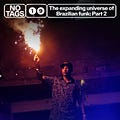


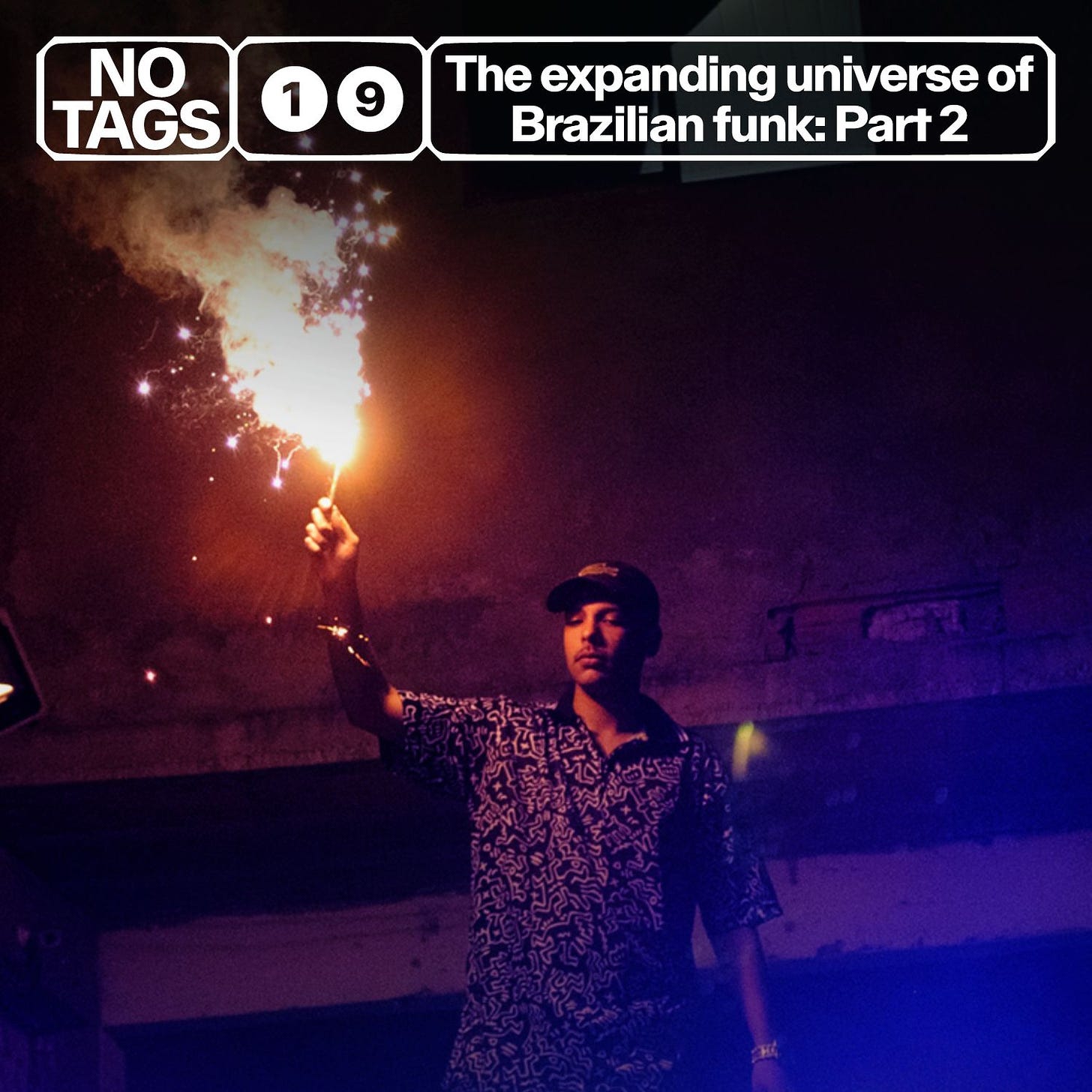
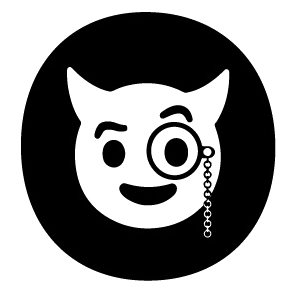
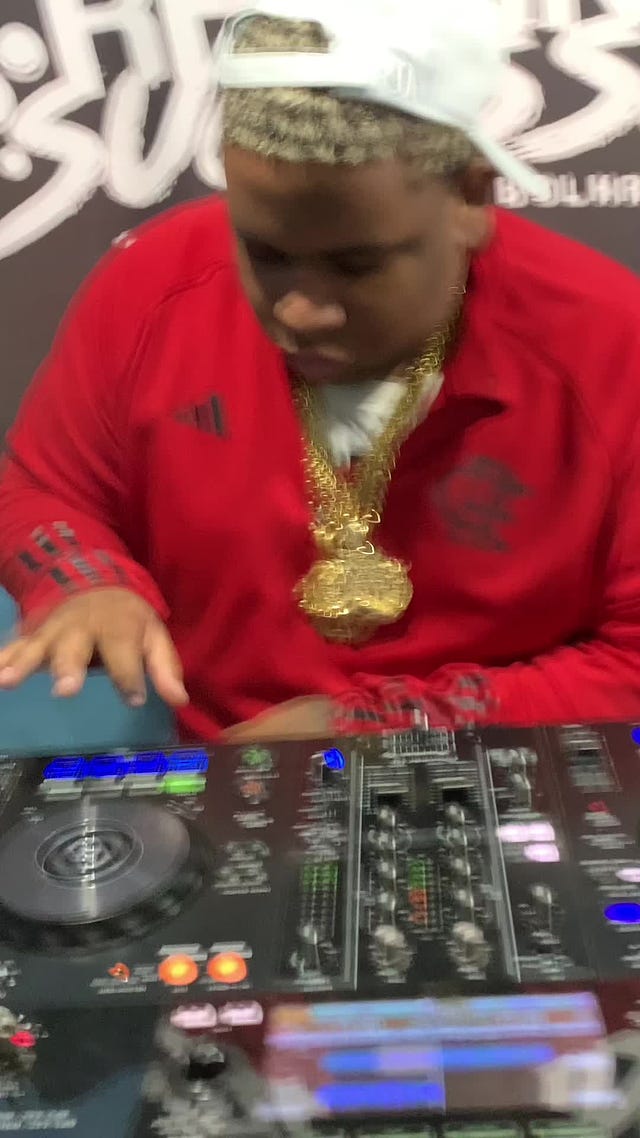



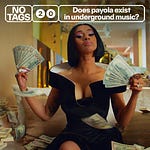



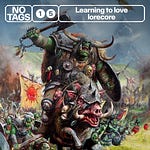

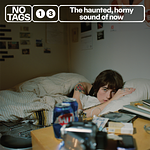
19: The expanding universe of Brazilian funk, part 2